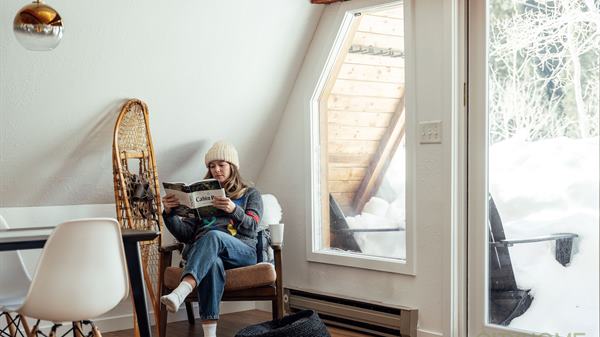When it comes to designing a space or inhabiting a home, nothing makes it feel more unequivocally yours than what (and whom) you put in it. Our COLLECTIVE pursuit is to live a life surrounded by beauty and inspiration, and we’re big believers that this idealist outlook starts at home. Now that we spend more time than ever in our sacred sanctuaries, we’ve explored the balance between living aesthetically and living purposefully, and we've considered that “the most comforting, most capable homes might not be the most visually perfect, but rather the most emotionally packed.” Swapping something manufactured for something handmade has never felt more appealing—a notion that readily extends from the ways we arrange our space to how we fill our walls. For this, our newest blog series, we’re focusing on the latter...
"The Art of Home" will chronicle our visits to the homes of devoted art lovers as we chat with them about how they live with, collect, and curate the pieces in their space.
We decided to start with local artist and collector Jorge Rojas in his art-packed abode in South Salt Lake (a space wherein one can easily explore and talk every medium for hours...which we happily did). A local performance artist and museum educator at UMFA, Jorge is also a painter, sculptor, and photographer whose work was recently picked up by our friends at Modern West. In his home, Jorge’s own paintings and photographs are interspersed throughout his larger, eclectic collection, hung salon style and spilling from room to room. His collection represents his travels, memories, and varied stages of life, which have seen him from Mexico to Utah to New York City and back (with stints in Seattle, San Francisco, Alaska, and India). Arrangements of small works hang alongside larger canvases, interrupted and puctuated by sculptural pieces and cultural artifacts.
"It's a record of my trajectory and experiences," says Jorge.
His purchasing habits, he notes, are influenced equally by emotional connection and aesthetic intrigue. From studio visits to pop up exhibitions, benefit shows to galleries, Jorge admits that buying art is a mix of impulse and addiction—but it typically starts with a personal relationship. Some local artists in Jorge's collection include Andrew Alba, Dennis, Reynolds, Laura Sharp Wilson, Fidalis Buehler, Ruby Chacon, Josh Winegar, Jared Lindsey Clark, Daniel Everett, Colour Maisch, Trisha Empey, Phoenix Ostermann, Miguel Galaz, Leia Bell, Roland Thompson, Chris Baczek, Amelec Diaz, Nestor Jimenez, Chauncey Secrist, John Sproul, Cat Palmer, Luca Pearl, Gabrielle Wolfe, Stefan Lesueur, Kristen Mitchell, and many others.
The world of art can often feel mystifying, but Jorge is adamant about lifting the veil through his work as an artist and arts professional. “It’s not about 'I understand that'...it’s about 'I feel that',” says Jorge of his approach to both creating and collecting—a philosophy that also serves as an ideal lens through which to view art in general. Inspired by Jorge’s down-to-earth approach to the experience of finding and collecting art, we asked him a few questions about how we might meaningfully cover our own walls...
Kelly Carper: You began collecting art in your 20s, while waiting tables and living in a small apartment in New York City. What advice can you give people who want to start collecting art but who are limited by budget and space?
Jorge Rojas: Buy art by emerging artists that you love and can afford—drawings, limited edition prints, photographs, small works, etc. Stick with original artworks. Support local community art openings. Some of my greatest scores have been at fundraisers for arts non-profits. Don’t be afraid to reach out to artists and ask if you can visit their studios. Let them know you’re on a budget but interested in owning their work...don’t be shy to ask about the work you’re interested in buying, their process and thinking behind the work. These conversations will add more meaning to the work you collect and to your connection with the artist. And if you’re an artist yourself, or have some useful service to offer, ask if they're open to trade. But most of all, purchase art from artists you respect and admire.
KC: You mentioned that when you were younger you bought more impulsively, but now that you have a family (and additional financial responsibilities) you have to budget your art spending. What does that look like for you?
JR: I have a monthly/yearly budget for purchasing art. I also have limited space in my home for displaying it, so I try to be responsible about my collecting habits. At least a third of my collection is in storage or waiting to get framed. It’s fun to rotate art on my walls and find creative ways to display it. Framing can get expensive, so it’s important for me to budget for that as well. I make a trip to the framers every two or three months. Fortunately, most of the work I buy looks best in simple frames, so it doesn’t cost an arm and a leg. I take my art to Signed & Numbered—they’re artists themselves, they hire artists, they make all their frames, their prices are fair, and they’re super nice.
KC: How do you view art as an investment, and how is that tied to your motivations for collecting?
JR: The important distinction is that I’m not just investing in art—I’m investing in artists. I don’t buy art from artists that have already “made it.” I can’t afford their art anyway. I invest in emerging or mid-career artists that I admire so that they have money to buy paint, canvas, film, pay for their studios, or whatever they need to continue doing what they do...to keep making art. There are a number of people who have done that for me, so in a way I’m paying it back. But I also invest in art because it is the best way I know of archiving my life and memories. Every piece in my collection is connected to a specific time, place, person, and period in my life. Each piece carries for me emotions, ideas, experiences. It is often connected to the places where I have lived or traveled to and the people I connected with there. I do like to imagine that some day my art collection might be worth something, or that it is a reflection of who I am as an artist and collector—but mainly I’m investing in people and in memories.
KC: Art is clearly a big part your family’s daily experience. How do your kids respond to that, and why is that so important to you?
JR: My kids have been going to art openings and museums since they were born, so art is just part of their lives. It’s important for me that they grow up making, looking at, and thinking about art because, just like reading books, it helps them become fuller, smarter, and more sensitive humans. They are only 8 and 10 years old, but already they understand that art has infinite expressions and can serve many purposes. They get that it's not only about beauty, but also about concepts and ideas. Their vocabulary and understanding of art is more sophisticated than my own when I was in college. This is, in large part, due to the fact that they’ve been taking art classes and summer camps at Arte Primero/Art First where they not only learn to make art, but also learn about artists, art movements through history, and how art helps shape our identities and our connection to culture. Art is a lot like piano lessons—they don’t fully appreciate it right now, but one day my kids will thank me for making it part of their lives growing up.
KC: As a curator, museum professional, and artist yourself, you’re constantly surrounded by amazing art. Are there certain qualities you look for when buying a piece or is it about your felt experience with the work?
JR: Years and years of working in the arts have informed my personal tastes and preferences. The more art I look at and learn about, the more I appreciate different types of art and artists—their skills, techniques, styles, creativity, ideas, vision, etc. But for me, it’s more about how the work makes me feel. It has to have a certain energy or quality that resonates with me and stimulates my mind. I’m less interested in realism, narrative, or figurative work. I tend to be attracted to work that is abstract, minimal, reductive, and consisting of simple geometric forms. I like work that feels pure in its simplicity and that I connect with energetically through things like color, texture, and mark making. I want to be able to see and feel the artist’s hand and process...to get into the mind of the artist. The artworks I bring into my home are pieces that talk to me, that I want to spend time with, that make me think and feel, and that are psychologically interesting and honest. I collect art that has the type of energy I want to surround myself with in my home—art that brings me joy and a sense of wonder.
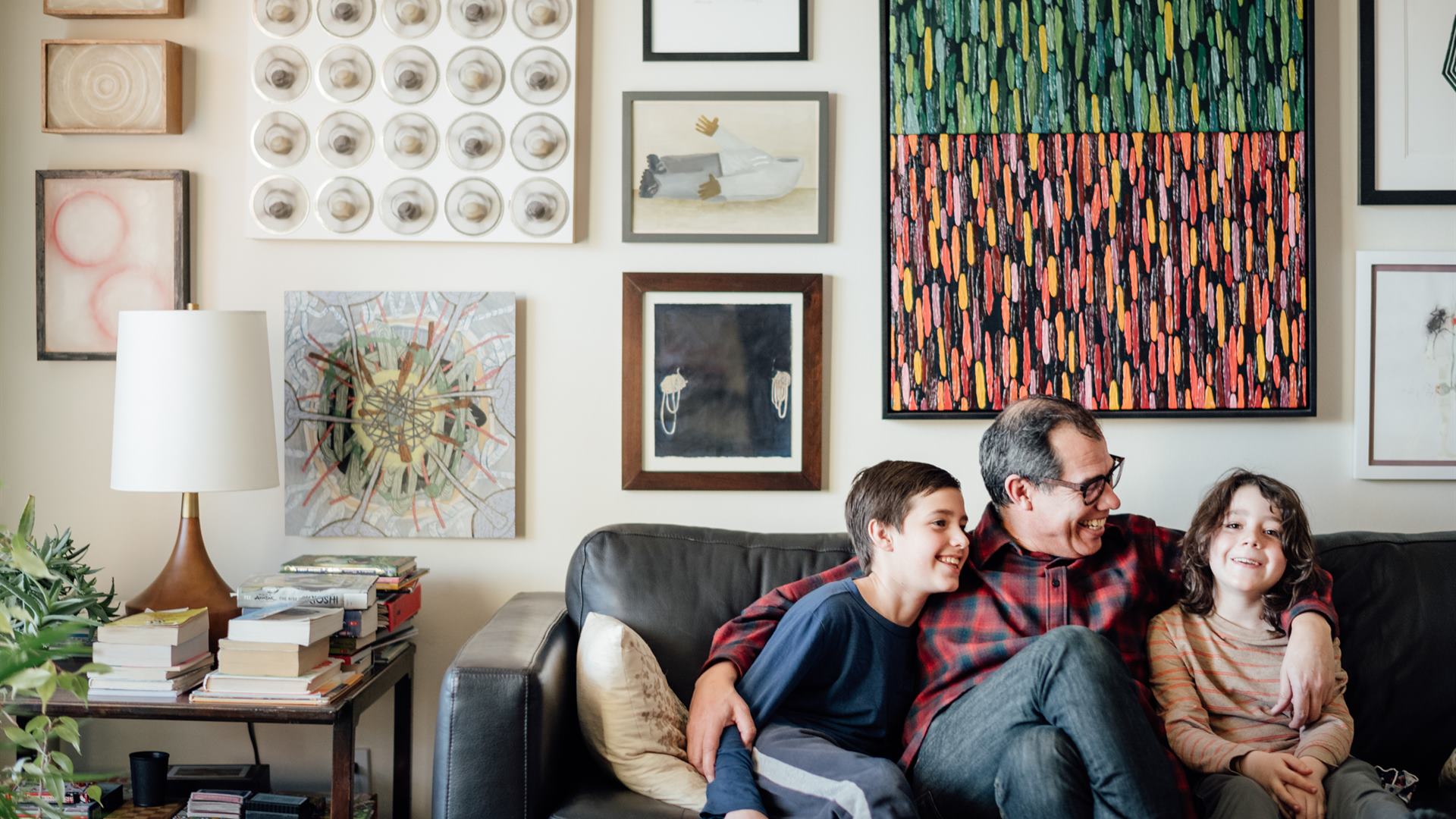

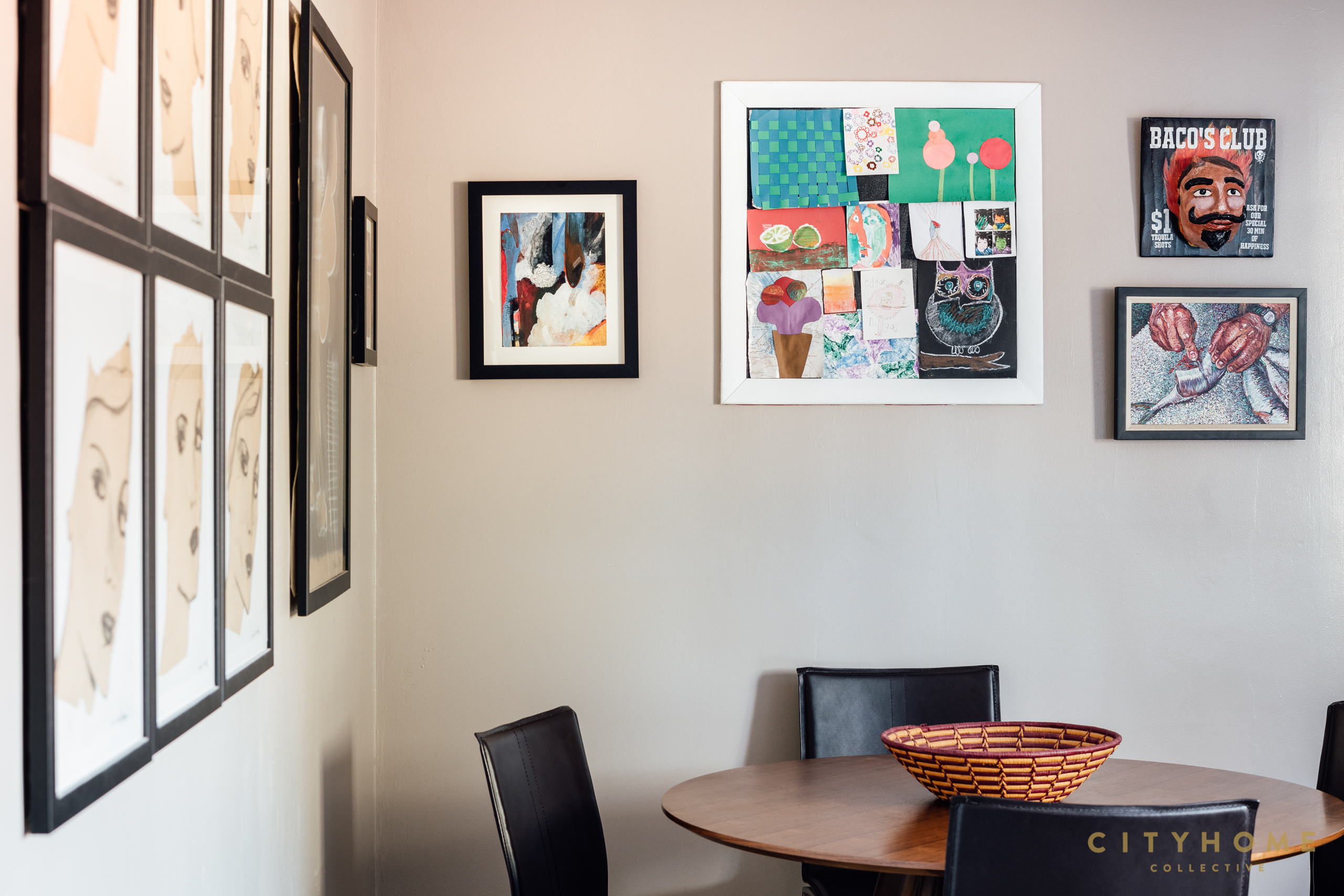
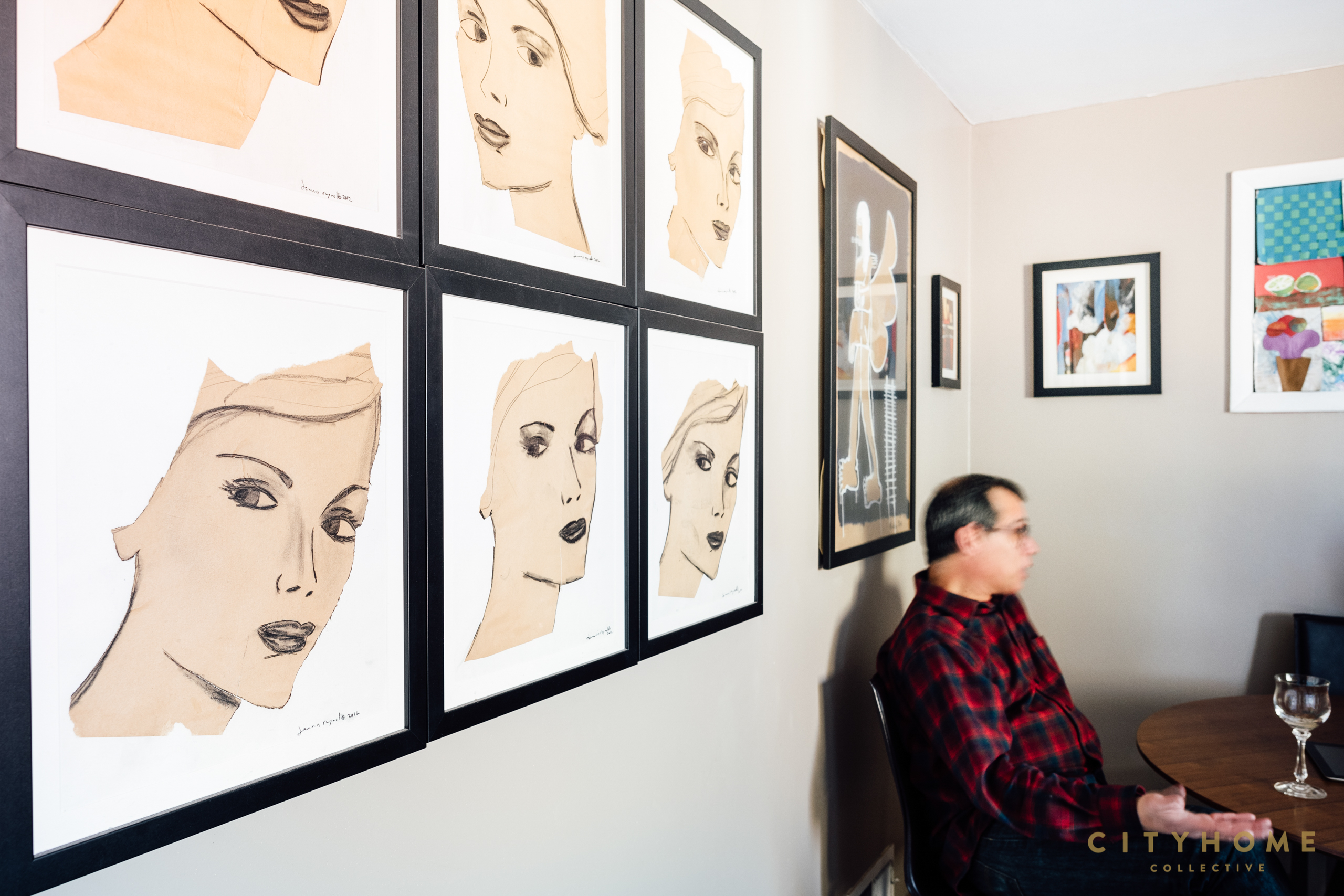
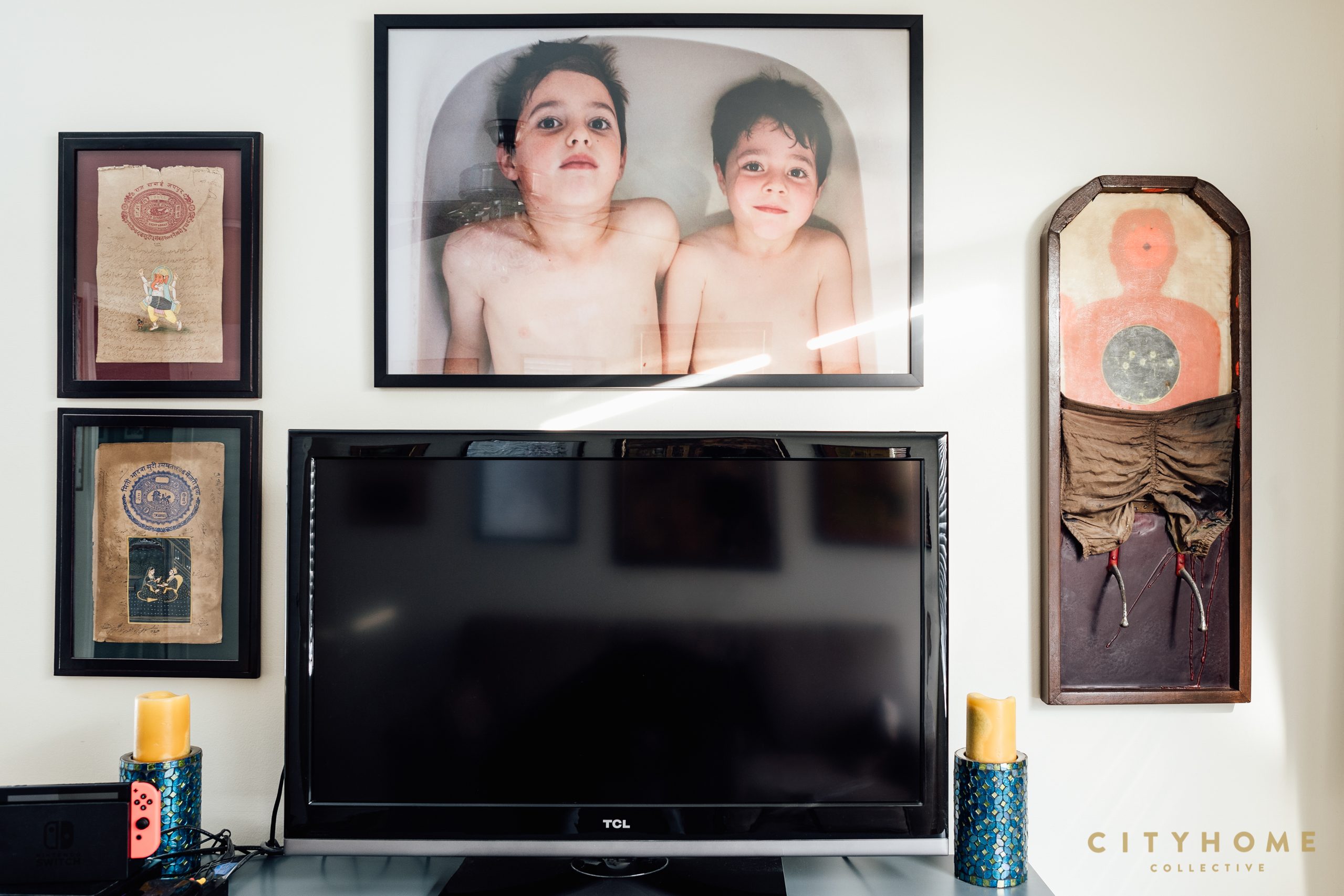
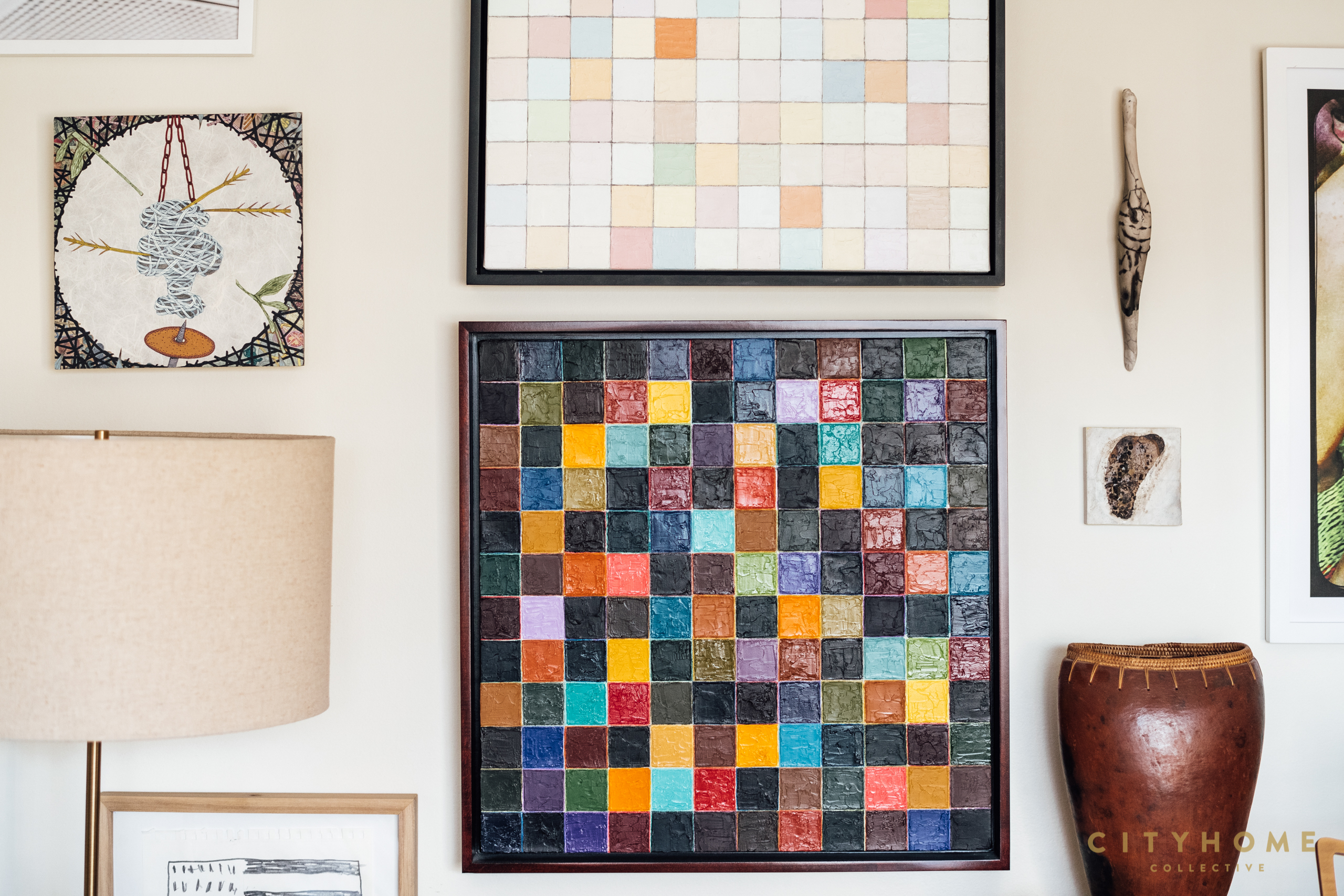
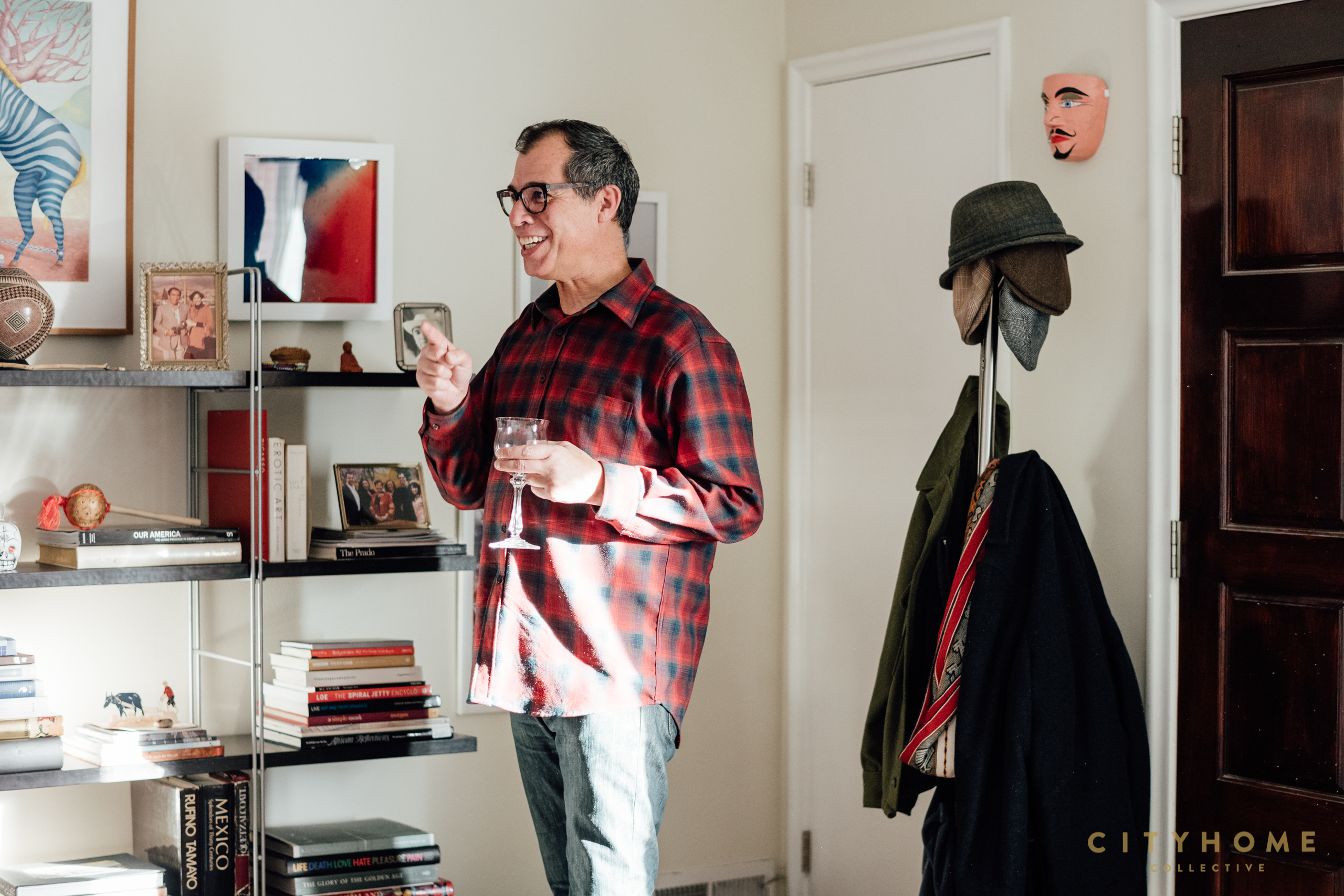
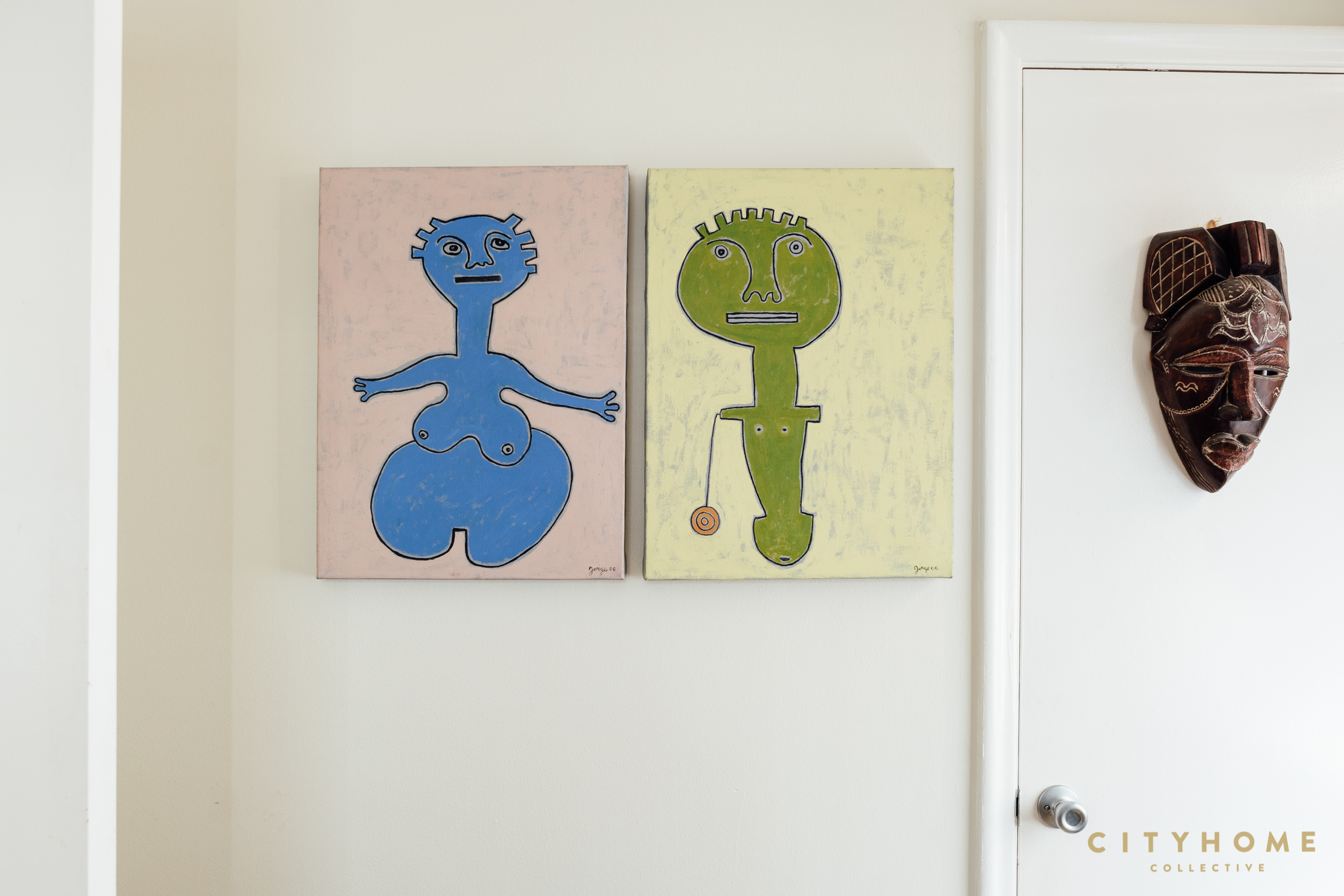
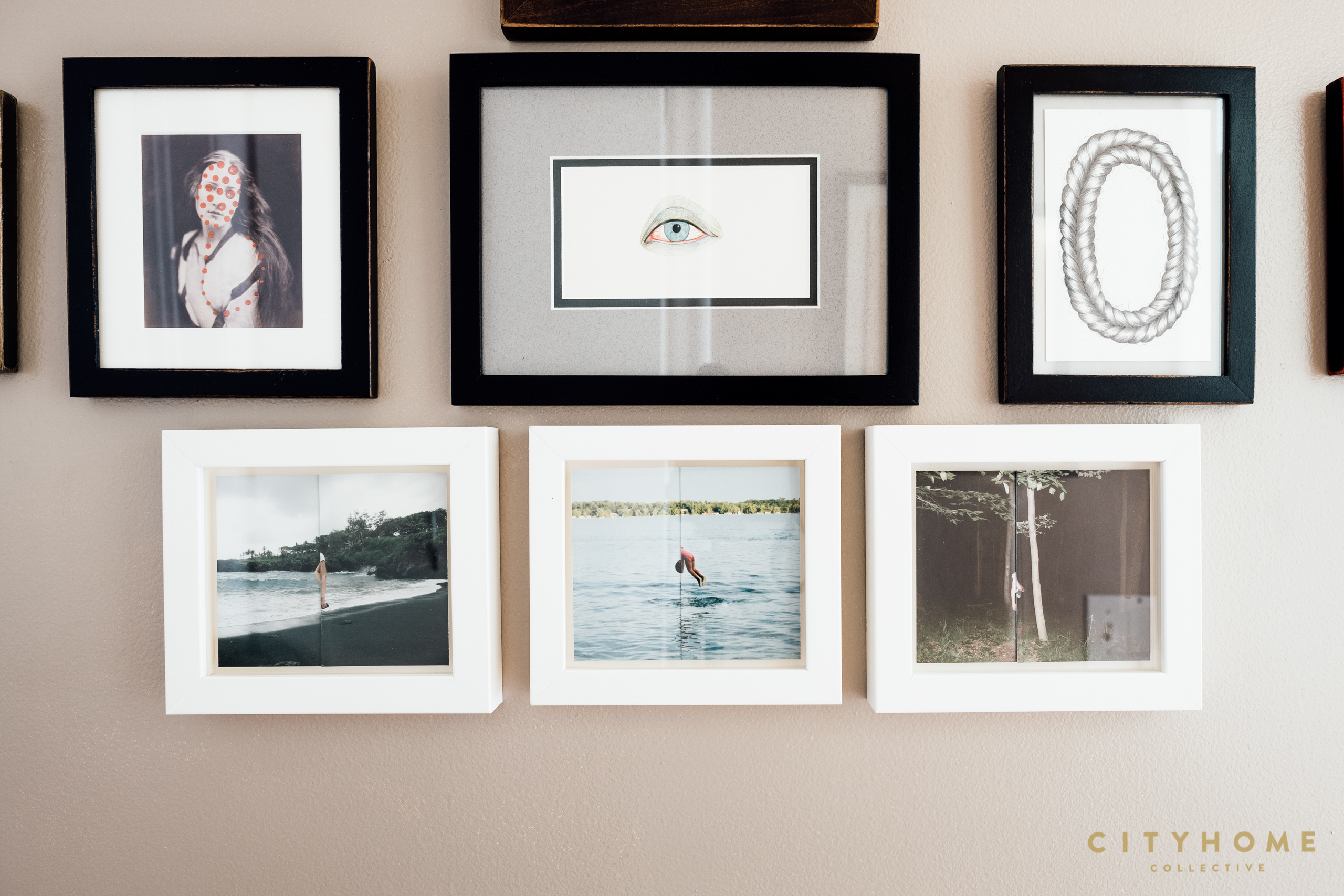

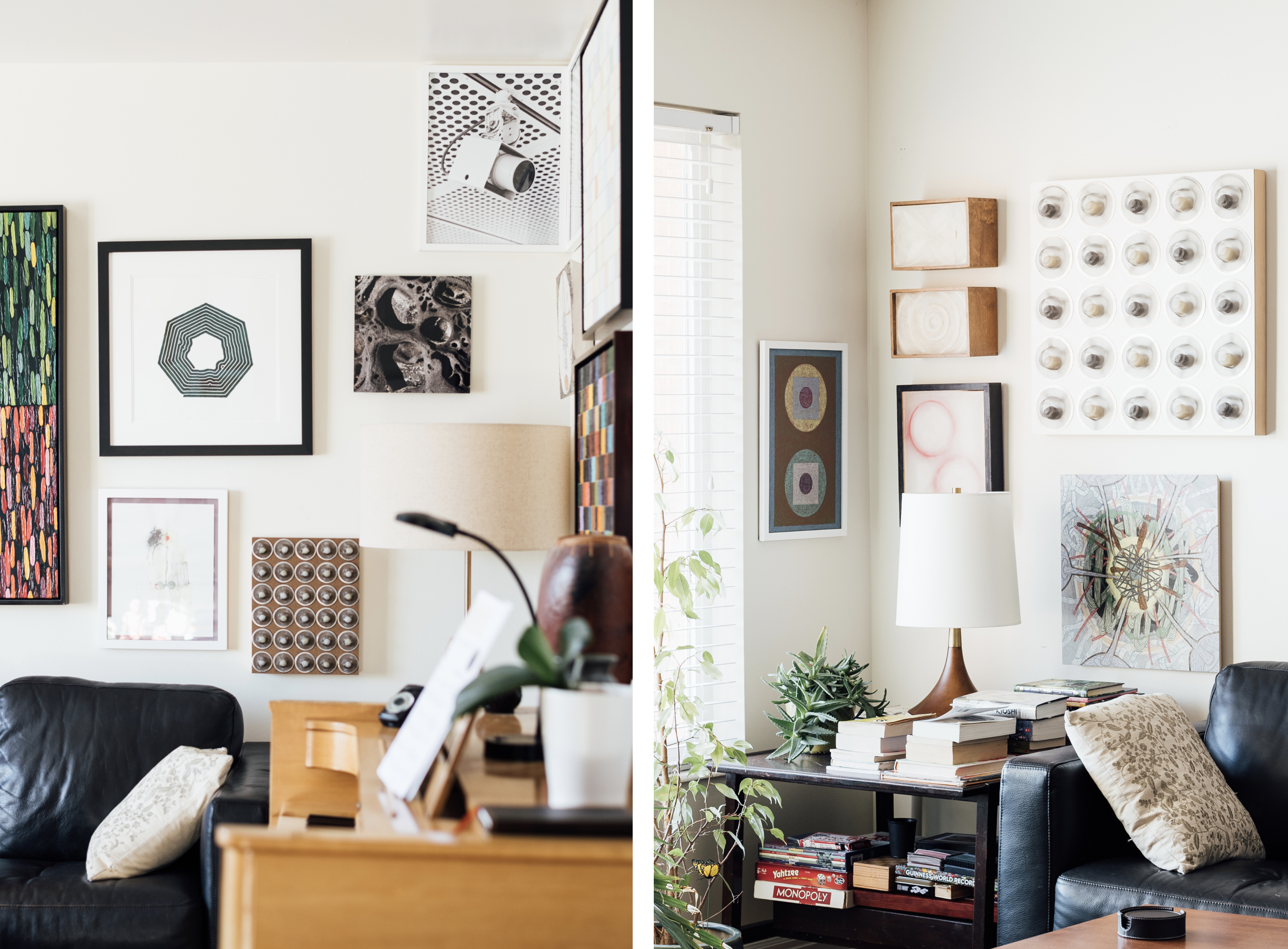
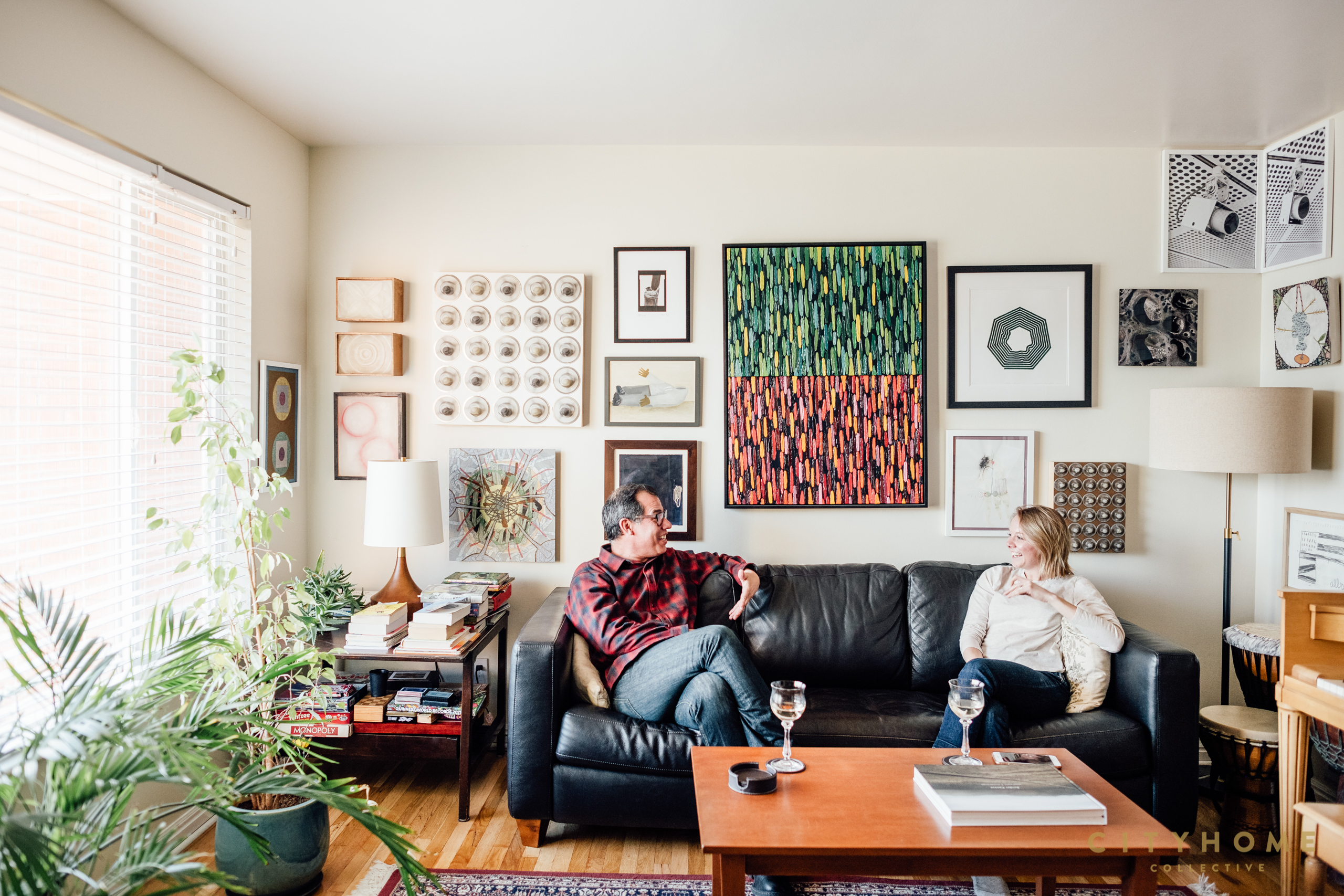
.jpg)



